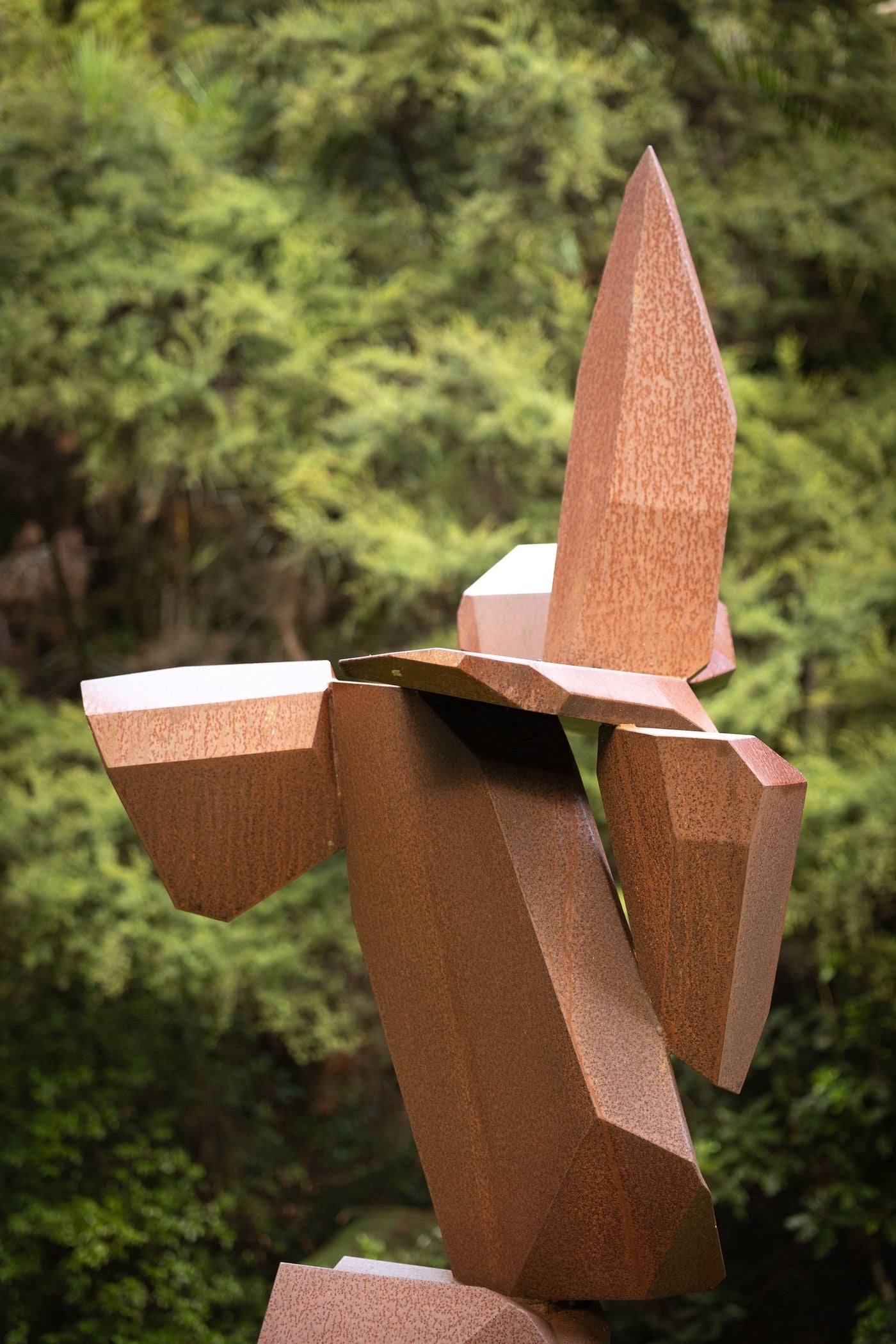Sarah McClintock: Ben Pearce, 'Fragile Monoliths'
Ben Pearce’s sculptures exist in the space in between. They are caught amidst the past and the future, aggression and instability, nature and culture. Precariousness has been a thematic thread throughout Pearce’s work – the balancing of fragility and strength within our bodies, memory, social structures, and materials has occupied him for years and takes a new form in these large-scale sculptures.
They resemble cairns, stacked stone structures which are traditionally created to act as markers or way finders, but where is Pearce leading us? The largest of his pieces act as public works of art, made in a material and scale that can only be comfortably housed outside. In this setting, they act as a reminder of place and space. In any scale they utilise the sculptural materials that Modernist sculptors Barbara Hepworth and Richard Serra both articulated were as essential as metal, wood, and stone; light and space (1). The understanding of these works is in the experiencing of them within a place and a time. Pearce’s cairns forge a path that connects humanity with nature. They mark and reveal the environment in which they exist – adjusting to the time of day, year, and rhythms of the natural world.
The body as physical presence and as an idea is also central to these works. They are not bodies, but their verticality places them within the realm of the human form. Faceted like roughhewn jewels, Pearce’s rock-like forms balance on top of one another in defiance of gravity – a dance of stone and steel. They speak to what Antony Gormely, the British sculptor, was aiming to achieve with his Slabworks. They utilise scale and instability to ‘make us aware of our own scale rather than as an exercise in monumentality or power’(2). As we stand under these forms, we are made small but not helpless. We contemplate the fragility of these natural forms and our own bodies in their shadow, with the knowledge that nothing lasts forever, but we have the effect to protect both.
Pearce approaches the making of these works like a colossal jeweller; the forms take the shape of a string of cut stones, pieced together and refined with a Dremel to adorn the landscape. This play between the very public nature of large-scale sculptures and the personal associations carried within jewellery embeds tension within the final works. Made to sit against the human body, jewellery is the most intimate art form, and by embellishing the environment with his jewel-like sculptures Pearce is placing our communal spaces within the scope of the individual – private and public can no longer be separated.
These fragile monoliths are unknowable. It is in this refusal to exist in one state – both stable and insecure, intimate and monumental, natural and constructed – that Pearce’s sculptures find their potency. Like the earth itself there is no end and no final revelation – it is instead a journey. To fully know them is impossible, but that is the point.
1 https://barbarahepworth.org.uk/about-barbara-hepworth/sophie-bowness-the-late-marble.php and https://sculpturemagazine.art/declaring-defining-dividing-space-a-conversation-with-richard-serra/
2 https://www.antonygormley.com/works/sculpture/series/constructed-slabworks



